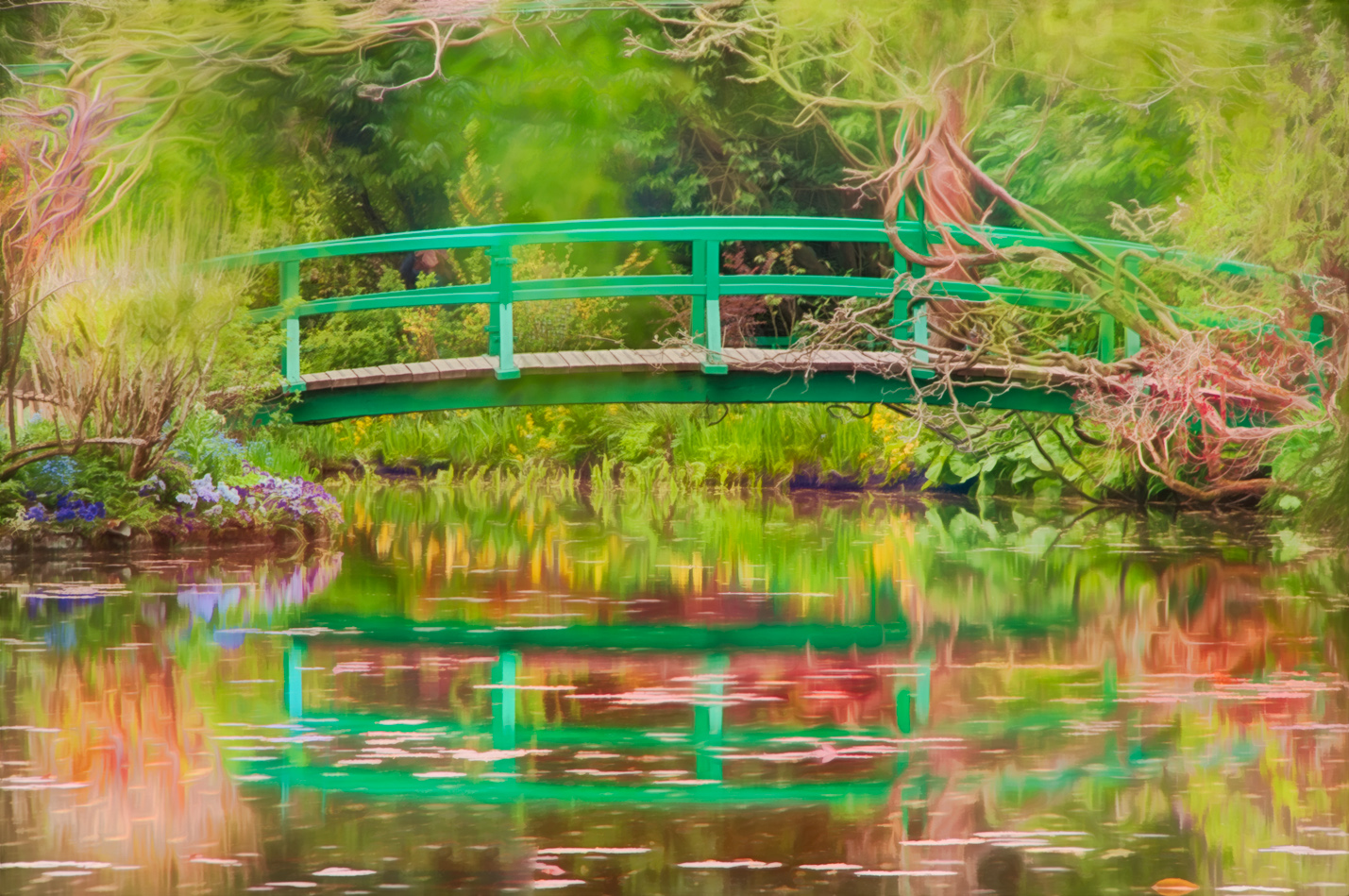As long as I can remember I have admired Claude Monet’s waterlilies, so finally getting to visit Monet’s garden at Giverny was like a pilgrimage for me. My group (shown here on the steps of Monet’s house at Giverny) was lucky with the weather—the sky was bright but overcast, with intermittent patches of blue. We were also lucky that the gardens at Giverny were not very crowded on the day we visited, and when our after-hours access (arranged by Mark Brokering) had kicked in we literally had the place to ourselves.

In Monet’s time, a train track bisected his garden in the horizontal direction, with the water garden on the other side of the tracks from his house and primary flower garden. There still are essentially two distinct areas, connected via an underground passage, but the trains have been replaced with a fairly busy road.
I spent the bulk of my time in the water garden area. Sure, the flower garden was nice, and the tulips were in bloom—but in some ways it was fairly conventional, organized in rows and beds. But there is nothing in the whole world like Monet’s waterlilies.
There’s a sense in which the views and vistas at Giverny evoke a subliminal memory of Monet’s paintings just by the elements that are present, such as the green, arching bridge. I tried to present that almost Proustian feeling of a visual memory at the threshold of recognition in my photos.
My approach and philosophy was to photograph the pieces that I thought I would need, taking my time with my camera on the tripod. The goal in post-production would be to combine the exposures, and to use the arts of digital post-production to create imagery that evoke feelings that might perhaps be worthy of the setting, and the connection with Monet.
With this image, I used the long exposure times combined with elements that were moving in the fairly stiff breeze to add an intentionally impressionistic effect. Combining multiple exposures allowed me to extend the “impressionism” across a broader swath of the image than would have been possible in a single exposure.
Exposure and processing data: 200mm, five exposures (two at 3/5 of a second, one each at 1/4 of a second, 1.3 seconds, and 2.5 seconds), circular Polarizer, +4ND filter, each exposure at f/29 and ISO 200, tripod mounted; processed and combined in Nik HDR Efex Pro and Photoshop, with effects added using LAB color adjustments, Nik Color Efex, Topaz Adjust, Topaz Simplify, and PixelBender.
Pingback: Villandry Gardens
Pingback: 2014 Photograph Paris with Harold Davis Workshop
Pingback: Van Gogh’s Church at Auvers
Pingback: Harold Davis Workshop Updates
Pingback: Giverny